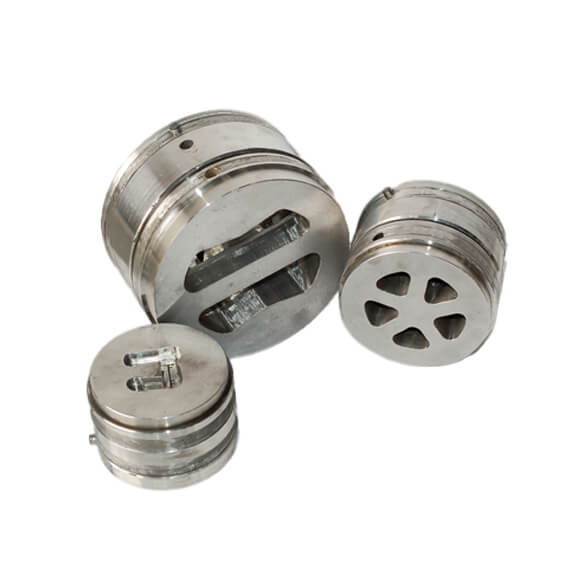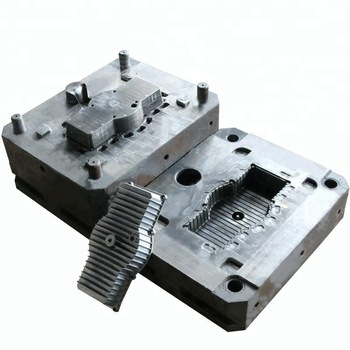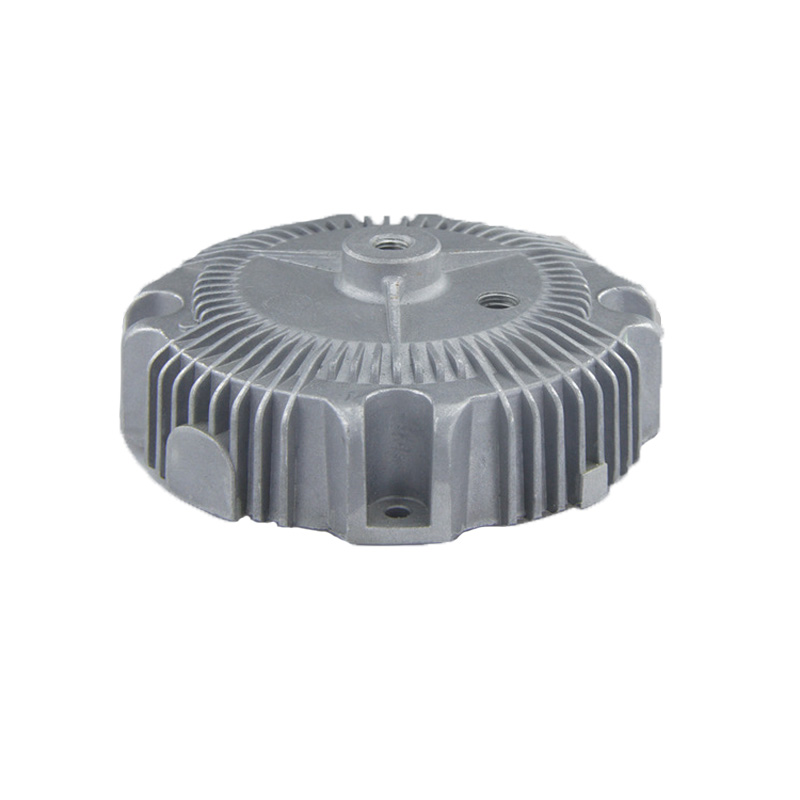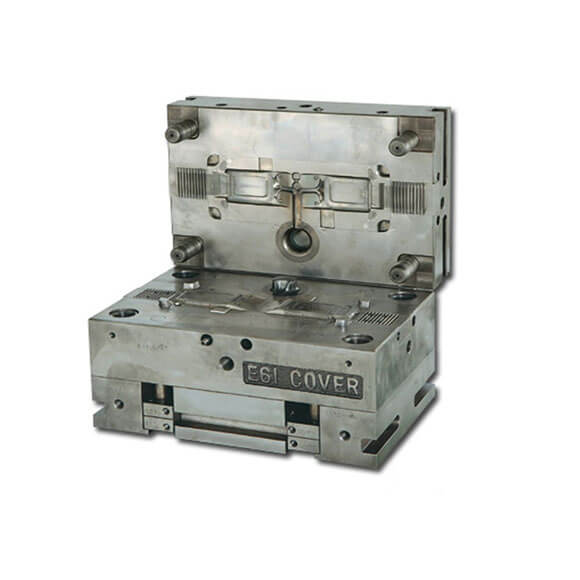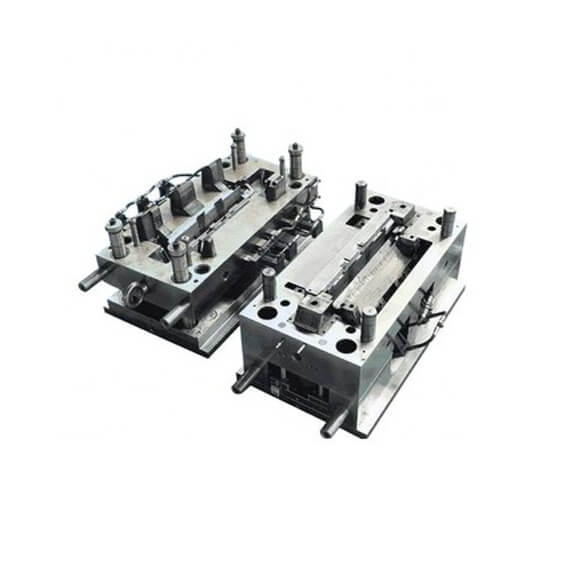هل تبحث عن مورد موثوق به وسريع الدوران لتصنيع قالب الصب يموت؟ مع مئات من آلات CNC ، تضمن قدرتنا الداخلية التي لا مثيل لها شحن أجزائك في الوقت المحدد ، في كل مرة. في Katio ، تم تصميم مرافق التصنيع باستخدام الحاسب الآلي المعتمدة من ISO 9001 لكل من النماذج الأولية السريعة والإنتاج المنخفض الحجم لمكونات الاستخدام النهائي.
قالب الصب بالقالب على آلة تشكيل القوالب الخاصة. العملية الأساسية لصب القالب هي: ملء السائل المعدني أولاً في تجويف القالب بسرعة منخفضة أو عالية. كما أن العيب السائب يجعل الهيكل الداخلي للفراغ يصل إلى الحبيبات المكسورة المزورة. تم تحسين الخصائص الميكانيكية الشاملة للفراغ بشكل ملحوظ.
تنقسم التقنيات الجديدة للمعالجة السطحية لقوالب الصب إلى ثلاث فئات:
(1) تكنولوجيا محسنة لعملية المعالجة الحرارية التقليدية ؛
(2) تقنيات تعديل السطح ، بما في ذلك معالجة الانتشار الحراري للسطح ، وتقوية تحويل طور السطح ، وتكنولوجيا تقوية الشرارة الكهربائية ، إلخ ؛
(3) تكنولوجيا الطلاء ، الطلاء الكيميائي ، إلخ.
Die-casting molds are a large category in molds. With the rapid development of the global automotive and motorcycle industry, the die-casting industry has ushered in a new period of development. At the same time, higher requirements have been placed on the comprehensive mechanical properties and life of die-casting molds. Luo Baihui, Secretary General of the International Mold Association, believes that to meet the increasing demand for performance, it is still difficult to meet the application of new mold materials only. Various surface treatment technologies must be applied to the surface treatment of die casting molds to achieve high efficiency of die casting molds , High precision and long life requirements. In various molds, the working conditions of die-casting molds are relatively harsh. Pressure casting is to make the molten metal fill the mold cavity under high pressure and high speed and die-cast. It repeatedly contacts with the hot metal during the work. Therefore, the die-casting mold is required to have high thermal fatigue resistance, thermal conductivity, wear resistance, and corrosion resistance. , Impact toughness, red hardness, good release properties, etc. Therefore, the surface treatment technology of the die-casting mold is required to be high.
1.Improved technology of traditional heat treatment process
The traditional heat treatment process for die-casting molds is quenching-tempering. Later, surface treatment technology was developed. Due to the variety of materials that can be used as die-casting molds, the same surface treatment technology and process can produce different effects on different materials. Schoff proposes the substrate pretreatment technology for the mold substrate and surface treatment technology. Based on the traditional process, it proposes suitable processing technology for different mold materials, so as to improve mold performance and mold life. Another development direction of the improvement of heat treatment technology is to combine the traditional heat treatment process with the advanced surface treatment process to improve the service life of the die casting mold. For example, the chemical heat treatment method of carbonitriding, combined with conventional quenching and tempering NQN (that is, carbonitriding-quenching-carbonitriding composite strengthening, not only obtains higher surface hardness, but also effectively hardens the layer. Increasing depth, reasonable gradient distribution of hardness of the infiltrated layer, improved tempering stability and corrosion resistance, so that the die casting mold can obtain good core performance while greatly improving surface quality and performance.
2. تكنولوجيا تعديل السطح تكنولوجيا
الانتشار الحراري للسطح
يشمل هذا النوع الكربنة ، النتردة ، البورون ، النيترة الكربونية ، النيترة الكربونية ، إلخ.
الكربنة والكربنة
يتم استخدام عملية الكربنة في العمل البارد والساخن وتقوية سطح القالب البلاستيكي لتحسين عمر القالب. على سبيل المثال ، قالب الصب بالقالب الفولاذي 3Cr2W8V مكربن أولاً ، ثم يخمد عند 1140 1150 ℃ ، ويخفف مرتين عند 550 ، صلابة السطح يمكن أن تصل إلى HRC56 ~ 61 ، والتي يمكن أن تزيد من عمر القالب للمعادن غير الحديدية المسبوكة وسبائكه بمقدار 1.8 3.0. عند الكربنة ، تشتمل طرق العملية الرئيسية على كربنة المسحوق الصلب ، وكربنة الغاز ، وكربنة الفراغ ، وكربنة الأيونات ، وكربنة الكربون التي تتكون عن طريق إضافة النيتروجين في جو كربنة. من بينها ، الكربنة بالفراغ وكربنة الأيونات من التقنيات التي تم تطويرها في العشرين عامًا الماضية. تتميز هذه التقنية بخصائص سرعة الكربنة السريعة وطبقة الكربنة المنتظمة وتدرج تركيز الكربون السلس والتشوه الصغير لقطعة الشغل. سيكون على سطح القالب ، وخاصة القوالب الدقيقة. تلعب دورًا متزايد الأهمية في معالجة الأسطح.
Nitriding and related low temperature thermal diffusion technology
This type includes nitriding, ion nitriding, carbonitriding, oxygen-nitriding, sulfur-nitriding, and sulfur-carbon-nitriding, oxygen-nitrogen-sulfur ternary infiltration and other methods. These methods have simple and convenient treatment process, strong adaptability, low infiltration temperature, generally 480 ~ 600 ℃, small deformation of the workpiece, especially suitable for surface strengthening of precision molds, and high hardness and good wear resistance of nitrided layer. Anti-stick performance.
3Cr2W8V steel die casting mold, after quenching and tempering, 520 ~ 540 ℃ nitriding, the service life is 2 to 3 times longer than the non-nitriding mold. In the United States, many die-casting molds made of H13 steel must be nitrided, and nitriding is used instead of tempering. The surface hardness is as high as HRC65 ~ 70, and the hardness of the core of the mold is low and the toughness is good. Mechanical properties. Nitriding process is a commonly used process for die-casting mold surface treatment. However, when a thin and brittle white bright layer appears on the nitrided layer, it cannot resist the effect of alternating thermal stress, and it is easy to generate microcracks and reduce thermal fatigue resistance. Therefore, in the nitriding process, the process must be strictly controlled to avoid the generation of a brittle layer. Foreign countries have proposed the use of secondary and multiple nitriding processes. The repeated nitriding method can decompose the bright white nitride layer that is easy to produce micro-cracks during service, increase the thickness of the nitriding layer, and at the same time, make the mold surface have a thick residual stress layer, which can significantly improve the life of the mold. In addition, there are methods such as salt bath carbonitriding and salt bath carbonitriding. These processes are widely used abroad and are rare in China. For example, the TFI + ABI process is immersed in an alkaline oxidizing salt bath after nitrocarburizing in a salt bath. The surface of the workpiece is oxidized and appears black, and its wear resistance, corrosion resistance and heat resistance have been improved. The life of the aluminum alloy die-casting mold processed by this method is increased by hundreds of hours. Another example is the oxynit process, which is nitridized after carbonitriding developed by France, and has more characteristics when applied to non-ferrous metal die-casting molds.

